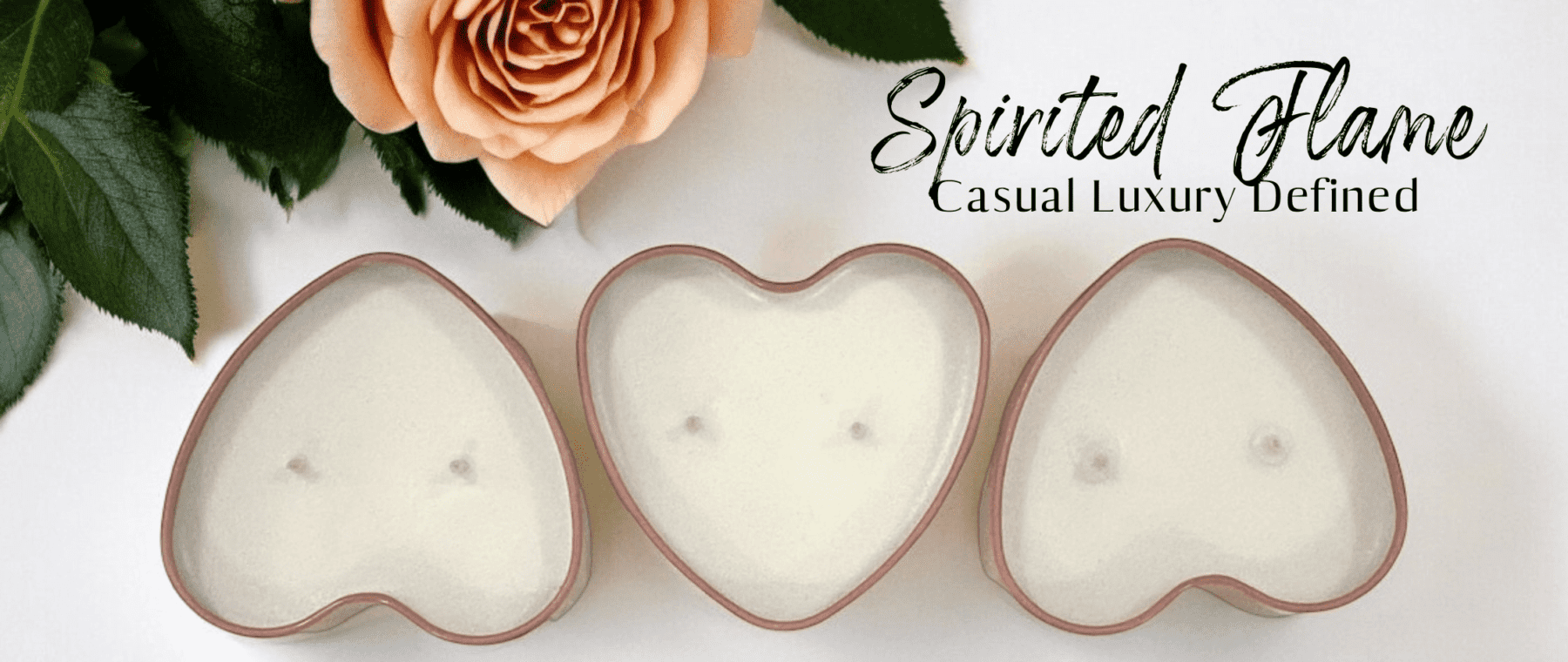Understanding Candle Waxes: Why Not All Candles Are Created Equal
So, this post is going to get a little technical, with good reason, because when it comes to candles, many of us judge them by their looks or price tags. But the reality is, there’s much more to a candle than meets the eye—or nose! The type of wax used plays a huge role in determining the quality, performance, and cost of a candle. Let’s have a look at some different candle waxes and explore why two seemingly identical candles can differ so much in price and value – and why that matters.

A World of Wax Options
Candle wax isn’t a one-size-fits-all material. There are many types of waxes, each with unique properties that affect how a candle burns, smells, and even looks, and the options below just scratch the surface of what’s available today:
• Paraffin Wax: A popular and versatile choice, paraffin is known for its strong scent throw and affordability. However, it’s petroleum-based, which might be a concern for eco-conscious buyers.
• Soy Wax: A natural, renewable option made from soybeans. It burns cleaner than paraffin and has a soft, creamy finish. Great for container candles, it’s a favourite for its sustainability and even burn.
• Beeswax: Made by honeybees, this premium wax burns longer, cleaner, and emits a natural honey scent. Its price reflects its high quality and eco-friendly nature.
• Coconut Wax: Extracted from coconut oil, it’s a luxurious option with excellent scent throw and a slow burn. Often blended with other waxes due to its softness, coconut wax is a go-to for high-end candles.
• Palm Wax: Known for its unique crystalline finish, this hard wax is used in pillars and votives. Sustainability concerns around palm oil production make it a more debated choice.
• Blended Waxes: Many candle makers create custom blends, such as soy-coconut or paraffin-soy (often called “Parasoy”), to combine the best properties of different waxes. These blends can enhance scent throw, burn time, or appearance.

Compare Candle Waxes
Specialty Waxes for Specific Uses
• Golden Wax 464 & 494: Soy wax blends designed for container candles (464) and wax melts (494). These are excellent for holding fragrance and achieving a smooth finish.
• IGI 6006: A paraffin-soy blend that offers the best of both worlds: clean burning with an amazing scent throw.
• S16, S100, and M12: These soy-based blends offer added benefits like better container adhesion, resistance to frosting, and durability in warm climates.
• Coconut Soy (CocoSoy) Blends: Luxurious waxes like A05 combine coconut and soy for a high-end candle experience with maximum fragrance release.
• PM7: A pillar and mould wax blend, great for sculptural candles or wax melts.

Soft vs. Hard Wax: Why It Matters
The hardness or softness of a wax affects its use and performance.
• Soft Waxes: Like soy or coconut, are best suited for container candles because they stay pliable and adhere well to glass. They also allow for higher fragrance loads, which means stronger scents.
• Hard Waxes: Such as palm or beeswax, are perfect for free-standing candles like pillars and tapers because they hold their shape.
Price Variability and What It Means for You
Wax type—and whether it’s “natural”, synthetic, or blended—plays a huge role in the price of a candle. For example:
• Natural Waxes (like beeswax or coconut wax) are more expensive because they are labour-intensive to produce and sustainably sourced.
• Blends involve careful formulation, which adds to their cost.
• Basic Waxes (like paraffin) are more affordable but may lack the premium characteristics of natural or custom-blended waxes.
Why Price Doesn’t Tell the Full Story
Two candles may look nearly identical but have completely different costs because of the wax used. A high-end candle might use a custom blend of coconut wax for its luxurious finish and slow burn, while a cheaper option could rely on basic paraffin. Both will burn and provide light, but the experience they offer—the fragrance, burn time, and environmental impact—will be worlds apart.
The takeaway? You can’t judge a candle’s value by its price alone. The cost reflects the wax, the craftsmanship, and the experience the candle is designed to deliver.

The Bottom Line: Buy Candles for the Value They Bring
At the end of the day, the “right” candle isn’t about how much it costs. It’s about the value it brings to you. Does it fill your home with a scent you love? Does it burn cleanly and last a long time? Does it align with your values, like being eco-friendly or made with natural ingredients?
When you choose a candle, look beyond the price tag and focus on what truly matters to you. Because when it comes to candles, it’s not just about light—it’s about the joy they bring into your life.
Next, why not check out our post on The Myth About ‘Natural’ and ‘Clean’ Candles.
More information:
1. https://allseasonswaxcompany.com.au/compare-our-waxes
2. https://makesy.com/pages/makesy-wax-comparison-chart
3. https://www.suppliesforcandles.co.uk/candle-college/introducing-parasoy
